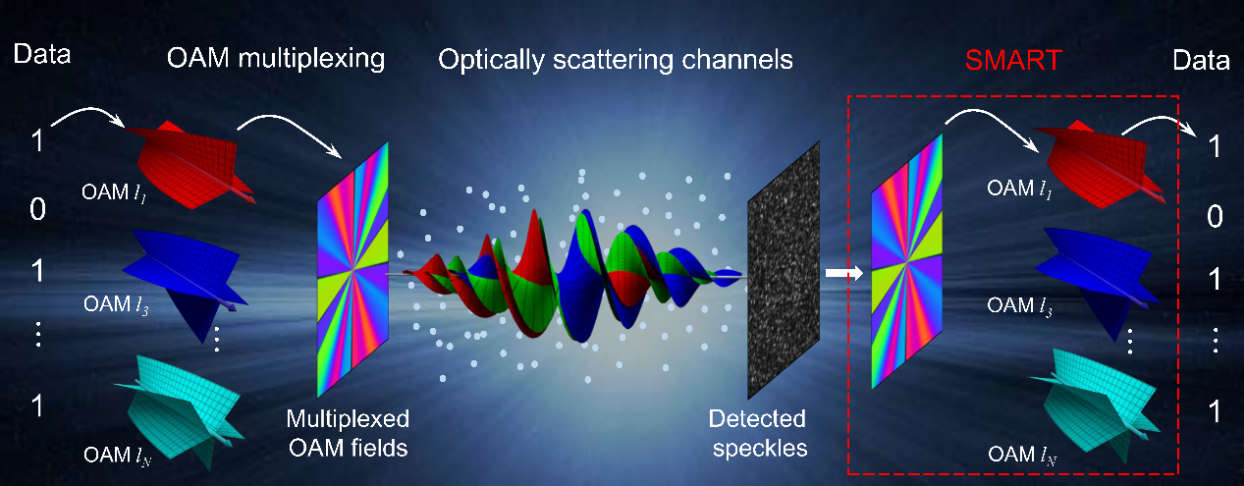USTC Scientists Realize High-Fidelity Optical OAM Communication Under Highly Scattering Environment
The orbital angular momentum (OAM) of light has been taken as a promising degree of freedom in multiplexing data. Because the OAM of light could offer the unlimited channels with excellent orthogonality for data transmission, the multiplexing of OAM channels has been widely applied in classical and quantum communications. However, optical scattering, caused by micro-particles in the atmosphere or by energy transfer between channels, reduces the channel quality in free-space communication. When a light beam carrying multiple OAM channels propagates in atmosphere, multiple scattering will distort both the wavefront and intensity of the beam and then destroy the orthogonality between OAM channels.It eventually will increase the crosstalk during de-multiplexing the OAM channels. Therefore, it is challenging to realize OAM-based communication in turbulent environments.
Recently, a research group led by Prof. Yinmei Li and Prof. Kun Huang from the University of Science and Technology of China (USTC) realize high-fidelity optical communication under the highly scattering environment. Dr. Lei Gong in this group and the colleagues developed a ‘scattering-matrix-assisted retrieval technique’ (SMART) to recover the scattered data from the OAM-multiplexed channel. The paper, titled “Optical orbital-angular-momentum-multiplexed data transmission under high scattering,” was published online in Light Science and Applications, 6 March 2019.

Fig. 1. SMART-enabled OAM-multiplexed transmission across scattering channels
The SMART platform enables the parallel sorting of OAM states from highly scattered speckle. In the data-transfer experiments, the high-fidelity transmission of both gray and color images at a low error rate of <0.08%, which is suppressed by ~20 times compared to the previous reports. Improvements on the technique could facilitate the transfer of high-quality optical data in harsh atmospheric or underwater conditions.
(School of Physical Sciences)
Back
